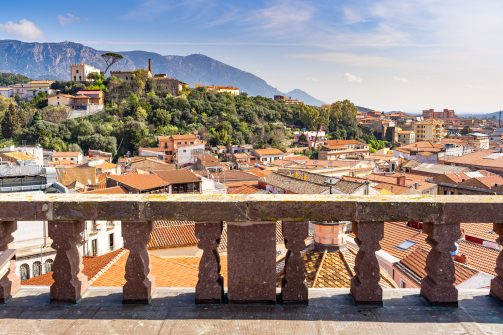The Iglesiente territory has a long history traversed by various events and alternating dominations of Phoenicians, Punics and Romans, attracted by the mining riches of the area, but it was Ugolino della Gherardesca, Pisan lord of the Donoratico dynasty, who united the various mining villages in the territory and founded Villa di Chiesa, of which the first mention dates back to 1272. Around that time came the drafting of the Breve, a municipal charter containing rules for the management of the mines and for the daily and social life of the town. In 1324, after a long siege and albeit with the honor of arms, the city surrendered to the Catalan Aragonese, who inaugurated the long and unprofitable Iberian supremacy in Sardinia, which did not end until the 18th century when the island became part of the Sardinian Piedmontese Kingdom. At that time, interest in mining was revived. Mining concessions multiplied in Iglesias, and large numbers of workers, now rejected by the failing agricultural sector, poured into the Sulcis area. The Iglesiente mining district became one of the most important in Europe, attracting investors from all over the continent. Today Iglesias, witness to a glorious mining past, is committed to the enhancement of the area through various tourist routes that please all visitors’ tastes: seaside tourism, with its marvelous Nebida coastline; medieval with the Salvaterra Castle and the Pisan walls; religious tourism with its churches built in the early Middle Ages and the first and second stages of the Santa Barbara Mining Trail; mountain tourism with Mt. Marganai; mining tourism with visits to the decommissioned mining sites of Porto Flavia, the Cave of Santa Barbara the compendium of Monteponi with the Villamarina Gallery and Pozzo Sella, the Palazzina Della Direzione mineraria and the former Foresteria; food and wine tourism through the wine, confectionery and food traditions; the museum itinerary (Mineralogical, mining art , Speleological, Ethnographic, Del Breve di Villa di Chiesa, the mining school museum – SCU.Di.Mi, medieval weapons exhibition); the Art Nouveau route with the building of the Sardinian Mining Association, the Electra Theater and the building of Lamarmora Square. Iglesias was one of the three royal cities and although today it has lost its territorial administrative centrality, it remains an icon for all of Sardinia.


